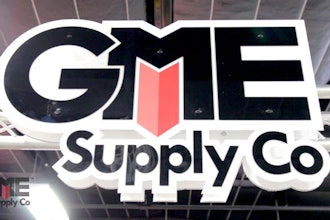Attribute-based demand planning, a method by which distributors customize products by adding additional and value-added accessories to deliver a newly created product, is a underused method of inventory and cost control.
As technology pushes forward and networks and systems become more complex, retailers are finding more innovative ways to control their inventories. The consumer demands real-time information and retailers are forced to employ systems that show inventory visibility to the item level and to provide that information to internal parts of the operation that handle production, procurement, shipping, customer service, and financials.
A shift from a traditional push model based on a time-series analysis to a more consumer-driven pull model for demand planning has started to emerge. Previously, technologies were not available and network bandwidths and even down to POS equipment did not accurately support real-time inventory levels. This made it difficult for vendors to not only predict sales but also to become reactionary to market situations rather than be proactive about misreported inventory levels.
Now that network bandwidth, internet connectivity, software capabilities, and hardware are all capable of building a conduit for bi-directional data flow so information can be shared from procurement all the way to customer delivery has now become reality. Vendors such as Red Prairie and Manhattan Associates have adopted new techniques and approaches to inventory tracking and visibility. In the case of these vendors, “demand sensing” technologies are very prevalent in their inventory strategy and visibility for organizations to keep a breast of what is going on at store level or with their consumers.
Another underused method of inventory control and a way to control inventory costs is described below, attribute-based demand planning. This is an approach to customize products by adding additional and value-added accessories or parts to deliver a newly created product. An example of this concept is how automotive manufacturers share platforms and parts to create different vehicles by using the same platform for several cars and trucks. This method is great at cost control but can also play into your inventory strategy for real-time results enabling the bi-directional data flow.
Attribute-based Demand Planning
The goal of a supply chain is to operate at the least possible dollar amount invested in inventory while maximizing efficiency and adaptability to changing customer demands. An approach to reducing the size of the chain is to reduce the amount of inventory within that chain. Reducing inventory can lead to recovered monies that can be applied to the bottom line. A method of doing this is attribute-based demand planning. This is a variation of the just-in-time (JIT) methodology for inventory reduction. Attribute-based demand planning is defined as the granular differentiation of product, with additional products or services added to products in order to increase value or to minimize the total inventory carried.
Attribute-based demand planning can achieve several benefits:
1. Increased selling price (and gross revenue) for specialty products arises from the specific requirements that can be added to the items for specific consumption, location of manufacture, and specifications of raw materials. An example of this is a diamond company. The raw and uncut diamond is the base product that is in inventory. A customer can request a specific cut, such as a box cut. The company will then schedule the resources for this operation (for both labor and machinery) to be completed. With the value-added component of providing a polished box cut stone, the company can charge a higher selling price to the consumer.
2. Product differentiation is enhanced by allowing substitutes. Granularity for product differentiation can reduce inventory costs by enabling more definitive forecasting (for contract negotiations), and a finer level of detail can be used for demand planning.
3. Customer service is improved by having available-to-promise (ATP) and similar products available for sale. With the availability of real-time stock reporting, customer service can give the consumer an accurate picture of delivery time.
4. Inventories are reduced with a product pooling strategy and similar component strategy. By invoking a pooling strategy for inventory, if the finished good requires many similar base components that must be assembled to complete the final product, then the company may use similar parts for completion of the good (as long as it does not make a difference in the finished product).
5. Efficiencies for operation and machine scheduling are increased. By creating a clearer picture of planning, operations can schedule its resources, labor, and machines to complete the job.
Eval-Source is an Analyst/Consulting consulting firm that offers enterprise software evaluation, benchmarking for companies and strategic consulting to the business marketplace. Follow our blog at www.eval-source.com/blog or on Twitter @eval_source.


















